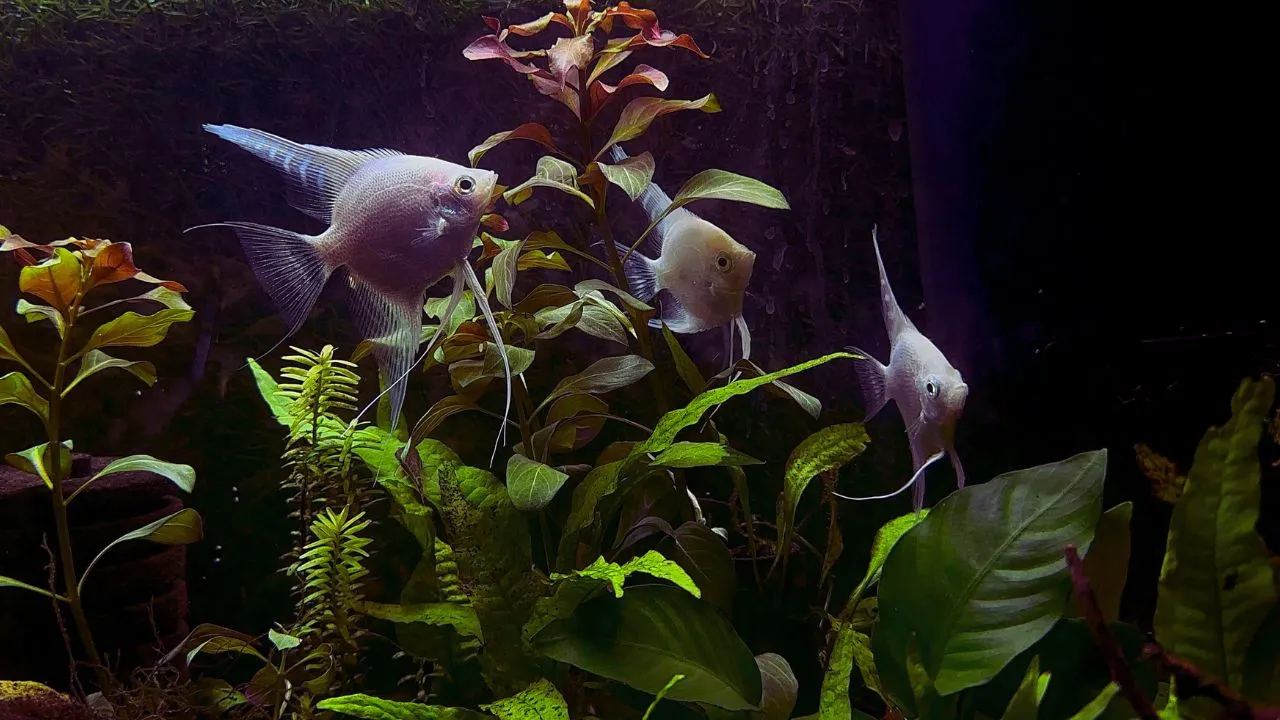Introduction.
For aquarists looking for a showstopper fish to add visual drama to their freshwater tank, platinum angelfish (Pterophyllum scalare) should be at the top of the list. Their unique silver-white coloration and graceful movements make them a popular choice among fish enthusiasts. In this guide, we will discuss about platinum angelfish care, covering everything from their genetics to tank requirements, feeding habits, common health issues, breeding tips, and other variations of platinum angelfish. By the end of this article, you will have all the knowledge you need to ensure the well-being of your platinum angelfish and create a thriving aquatic environment.
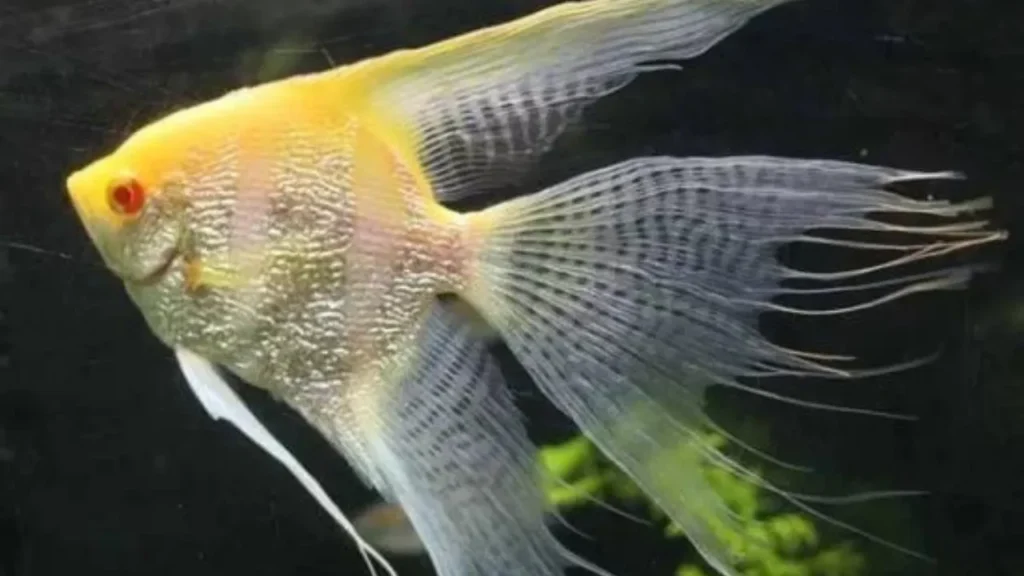
Proper platinum angelfish care starts with understanding the basics about these unique fish. Platinum angels get their name from a rare genetic mutation that reduces black pigment and increases iridescent layers in the skin, giving them a striking pale, shimmering appearance. While normal angelfish have black vertical bars, platinum varieties exhibit little to no black pigment. This mutation originated decades ago and continues to be selectively bred to intensify the platinum sheen.
While their metallic gleam is eye-catching, platinum angels require more specialized care than traditional angelfish. Their pale coloration is linked to genetic sensitivities that can make them more vulnerable to illness and stress. However, with the proper tank setup and care routine, platinum angelfish can make a rewarding long-term addition to your freshwater aquarium. This guide will walk you through the key aspects of health, tank requirements, nutrition, genetics, and behavior to help you successfully raise vibrant platinum angels.
Understanding Platinum Angelfish Genetics.
The platinum angelfish genetic mutation is the reason of its distinct coloration that affects the fish’s pigmentation. This mutation results in a silver-white body with no markings. It is important to note that platinum angelfish are not albinos, as they still have pigmented eyes. Understanding these genetics is crucial for breeders and hobbyists who want to produce or maintain platinum angelfish in their tanks. By selectively breeding platinum angelfish, it is possible to maintain the purity of their coloration and enhance their desired traits.
Platinum Angelfish Care Essentials.
There are several factors which you have to look out to take care of platinum angelfish. Some key factors on platinum angelfish care sheet are below.
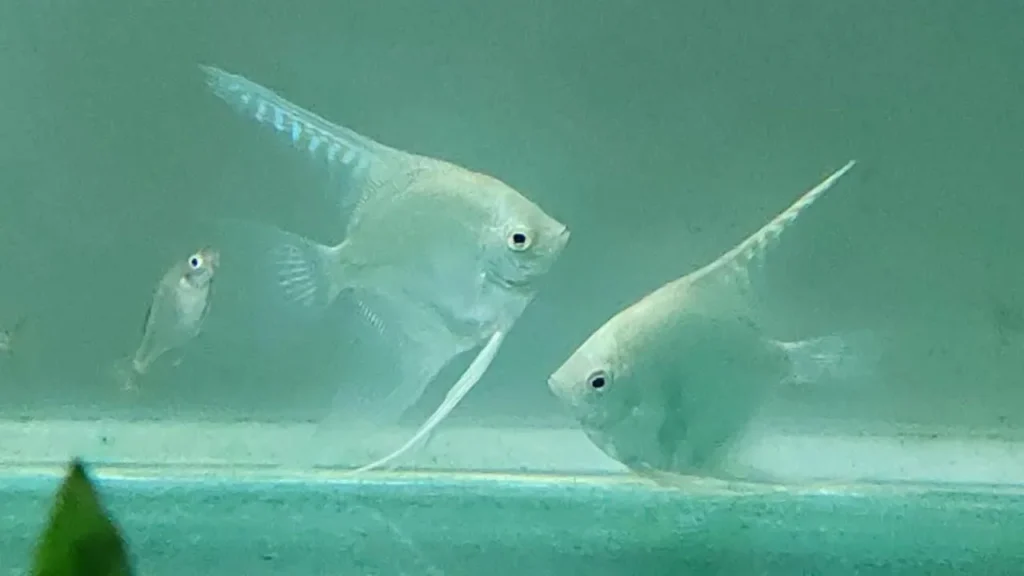
Platinum Angelfish Size and Tank Requirements
As far as platinum angelfish size, they can grow up to 6 inches in height, making them a relatively large species compared to other angelfish variations. Due to their size, it is essential to provide them with a spacious tank to thrive. A minimum tank size of 30 gallons is recommended for a pair of platinum angelfish, with an additional 10 gallons for each additional fish. The tank should have tall plants and driftwood to mimic their natural habitat and provide hiding spots. It is crucial to maintain excellent water quality by regularly monitoring ammonia, nitrate, and nitrite levels. Additionally, keeping the water temperature between 78-82°F and the pH level around 6.5-7.5 will promote the health and well-being of your platinum angelfish.
Setting up the Perfect Platinum Angelfish Tank.
Creating the perfect tank environment for your platinum angelfish requires careful consideration of various factors. Firstly, ensure that the tank is adequately cycled before introducing the fish. This will establish a healthy biological filter and maintain stable water conditions. Next, provide a variety of hiding spots and open swimming areas to cater to the angelfish’s natural behavior. Adding tall plants such as Amazon swords, Java ferns, or anubias will not only enhance the aesthetics but also provide shade and shelter. A dimly lit tank with subdued lighting will help replicate their natural habitat. It is essential to maintain a clean tank by performing regular water changes and gravel vacuuming to remove any debris or waste that can lead to poor water quality.
Complete guide to platinum angelfish tank size & setup….
Water Parameters and Maintenance for Platinum Angelfish
Maintaining the appropriate water parameters is crucial for the health and well-being of your platinum angelfish. The ideal temperature range for platinum angelfish is between 78-82°F. The pH level should be maintained around 6.5-7.5, and hardness should be kept between 3-8 dKH. Regularly test the water parameters using a reliable water testing kit and make adjustments as necessary. It is recommended to perform weekly water changes of 25-30% to remove any accumulated toxins and maintain water quality. Additionally, keeping a close eye on ammonia, nitrite, and nitrate levels is vital, as high levels can be detrimental to your fish’s health.
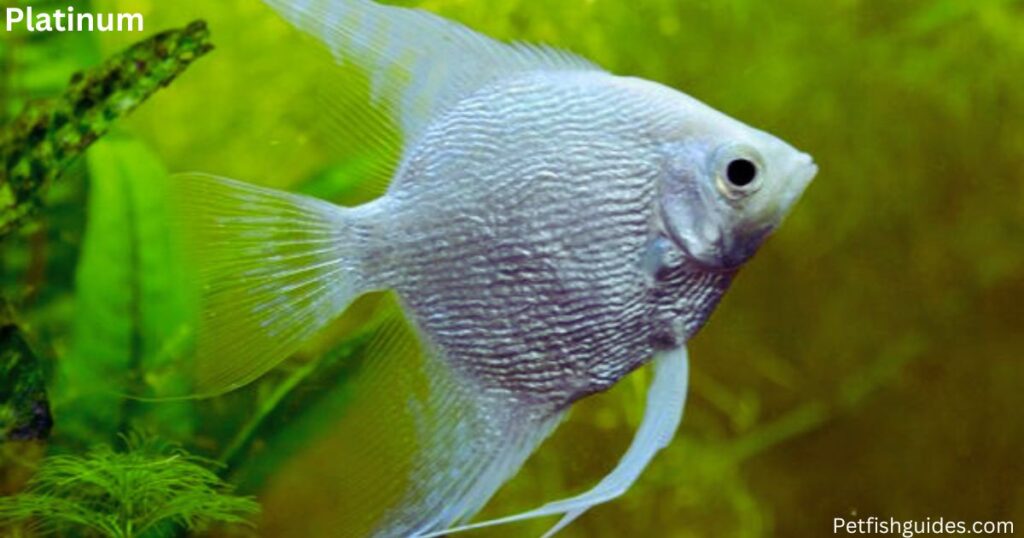
Feeding Habits and Nutrition for Platinum Angelfish
Platinum angelfish are omnivorous and require a balanced diet to thrive. In the wild, they primarily feed on small insects, worms, and plant matter. In captivity, you can provide a variety of food options such as high-quality flake or pellet food, frozen or live foods like brine shrimp, bloodworms, and daphnia. It is essential to feed them small portions multiple times a day to prevent overeating and maintain water quality. Observing their feeding behavior will help you gauge the right amount of food to provide. Remember to remove any uneaten food after a few minutes to prevent it from decomposing and affecting water quality.
Common Health Issues and How to Prevent Them in Platinum Angelfish
Like any other fish, platinum angelfish are susceptible to certain health issues. One common ailment is ich, which is characterized by white spots on the fish’s body. To prevent ich, maintaining optimal water parameters, providing a stress-free environment, and quarantining new fish before introducing them to the main tank is essential. Another common issue is swim bladder disorder, which can be caused by overfeeding or poor water quality. To prevent this, feed your angelfish small portions and maintain excellent water conditions. Regularly observing your fish for any signs of illness, such as lethargy, loss of appetite, or abnormal behavior, will help you catch and treat any health issues early on.
Breeding Platinum Angelfish: Tips and Considerations.
Breeding platinum angelfish can be a rewarding experience for aquarists. To initiate breeding, it is important to provide the angelfish with a suitable environment. A separate breeding tank with vertical surfaces, such as a tall piece of slate or a spawning cone, should be set up. The water temperature should be slightly raised to around 82-86°F, and the pH level should be slightly acidic, around 6.0-6.5. Conditioning the breeding pair with a variety of live and frozen foods will increase their chances of successful breeding. Once the pair has laid eggs, they will guard and fan them to ensure proper oxygenation. It is advisable to separate the parents from the eggs once hatched, as they may consume their own fry. Providing the fry with small, nutritious foods, such as baby brine shrimp or crushed flake food, will promote their growth and development.
Platinum Angelfish Size and Growth.
Understanding the growth pattern and factors influencing platinum angelfish size and growth allows you to monitor your angel’s development. Here’s what to expect as your fish matures:
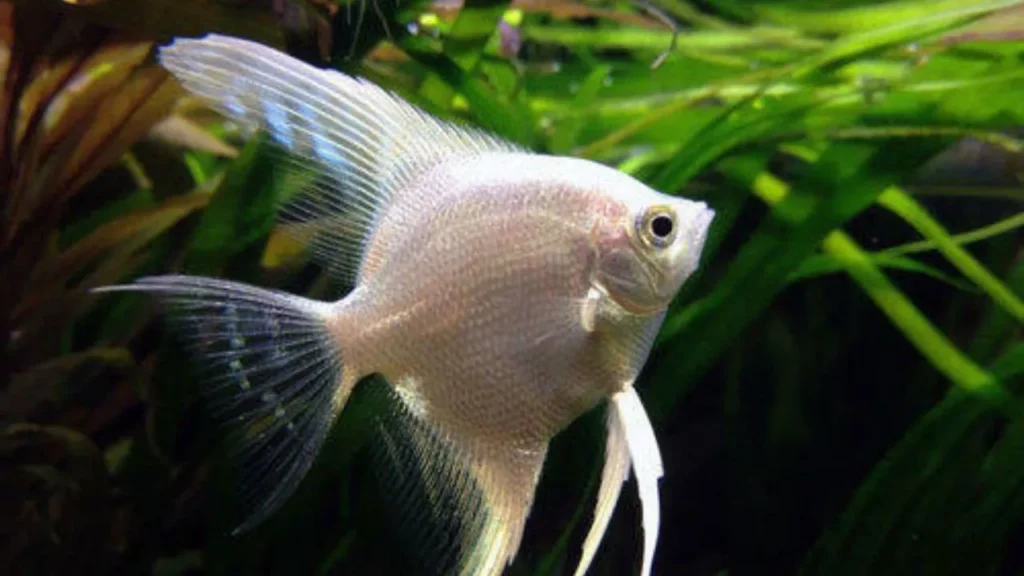
Growth Stages
Platinum angelfish size can reach about dime-size as fry, 1-2 inches as juveniles around 6 months old, and 4-6 inches as full grown adults from 12-24 months old.
Factors Influencing Platinum Angelfish Size
Max Platinum Angelfish size depends on genetics, nutrition, tank size, water quality, and competition/aggression from tankmates. Support optimal growth by controlling these variables.
Monitoring and Promoting Healthy Growth
Weigh fish monthly and watch for steady gains. Offer a high quality, varied diet. Perform regular water changes in a sufficiently large tank. Reduce aggression by providing ample hiding spots.
Common Varieties: Platinum Blue, Albino Platinum And Platinum Panda Angelfish.
While all platinum angels lack dark pigment, specific color morphs have been developed. These include platinum blue, albino platinum and platinum panda angelfish.
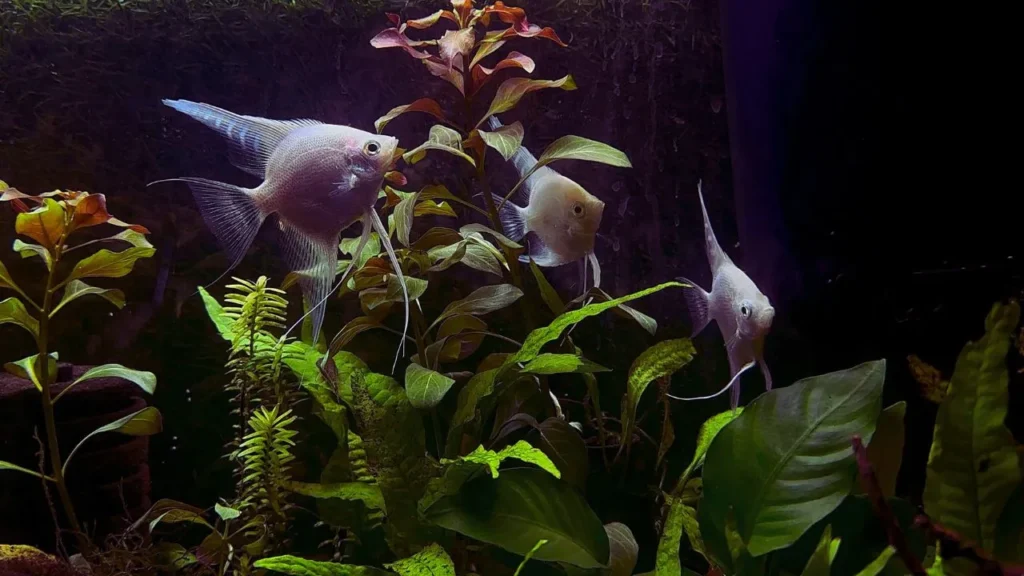
The platinum angelfish gets its distinct coloration from a genetic mutation that affects the fish’s pigmentation. This mutation results in a silver-white body with no markings. It is important to note that platinum angelfish are not albinos, as they still have pigmented eyes. Understanding these genetics is crucial for breeders and hobbyists who want to produce or maintain platinum angelfish in their tanks. By selectively breeding platinum angelfish, it is possible to maintain the purity of their coloration and enhance their desired traits.
Troubleshooting Common Issues.
While platinum angels are stunning, their genetic sensitivities can make them prone to health issues if care is improper. Here is how to prevent and address problems:
Identifying and Addressing Health Concerns
Look for signs of illness like clamped fins, bloated abdomen, skin flukes, rapid breathing, and lethargy. Quarantine and treat fish promptly when issues emerge.
Behavior Patterns to Watch For
Aggression between angels, nipping at tankmates, skittishness, or hiding signal something is wrong with the tank conditions or fish health. Address the root cause.
Conclusion.
In conclusion, mastering platinum angelfish care requires a good understanding of their genetics, tank requirements, feeding habits, and potential health issues. By providing the right environment, maintaining optimal water conditions, and offering a balanced diet, you can ensure the well-being of your platinum angelfish. Breeding these beautiful fish can be a rewarding endeavor, and exploring other variations like platinum panda, platinum blue, and albino platinum angelfish can add a touch of uniqueness to your aquarium. With the knowledge gained from this guide, you are now equipped to create a thriving aquatic environment and enjoy the vibrant beauty of platinum angelfish in your own home.
FAQs.
How big do platinum angelfish get?
Platinum angelfish typically reach 4-6 inches in length when fully grown. Their size depends on factors like genetics, diet, water quality, and tank size.
What is the ideal platinum angelfish tank size?
A minimum 29 gallon tank is recommended for a pair of platinum angelfish, with an additional 10 gallons per extra angel. Taller tanks are preferred given their body shape.
Are platinum angelfish aggressive?
Platinum angelfish can show aggression towards each other, especially during spawning. Provide plenty of hiding spaces and plants to diffuse aggression. Avoid housing them with nippy tankmates.
What temperature do platinum angelfish need?
The ideal water temperature range for platinum angelfish is 78-84°F. Use a reliable heater and thermometer to maintain a stable temperature.
What should I feed my platinum angelfish?
Offer a varied, protein-rich diet including flakes, pellets, frozen foods, vegetables, and supplements like spirulina. Feed 2-3 times daily in appropriate portions.
Why are my platinum angelfish hiding all the time?
Excessive hiding signals stress or illness. Check water parameters and treat accordingly. Reduce tank aggression and add more plants/decor for secure hiding spots.
How can I breed my platinum angelfish?
Condition the pair with high-quality foods. Simulate rainy season conditions. Provide a spawning slate. Remove parents after spawning to raise eggs/fry.
What are common platinum angelfish diseases?
Watch for ich, velvet, fin rot, columnaris, dropsy, fish TB, and parasites. Quarantine new fish and treat diseases promptly.

